In the past month, major projects seem to have agreed to launch their TGE in September and October, and the wealth effect of new coins, led by STBL, 0G, and Aster, is quite considerable.
Coinciding with the National Day holiday, if you are not keen on monitoring the market, why not take some time to participate in new coin offerings? Rhythm BlockBeats has compiled several recent projects that are also receiving a lot of attention.
Momentum
Momentum is a decentralized exchange (DEX) backed by well-known VCs such as Sui, Coinbase, and Circle, which secured strategic financing at a valuation of $100 million on June 5 this year from VCs including OKX.
The product includes multi-signature fund management, token release, and liquidity allocation, and is developed by the team behind the multi-signature wallet MSafe (Momentum Safe). Due to its background in multi-signature wallet projects, it places a greater emphasis on asset management security.
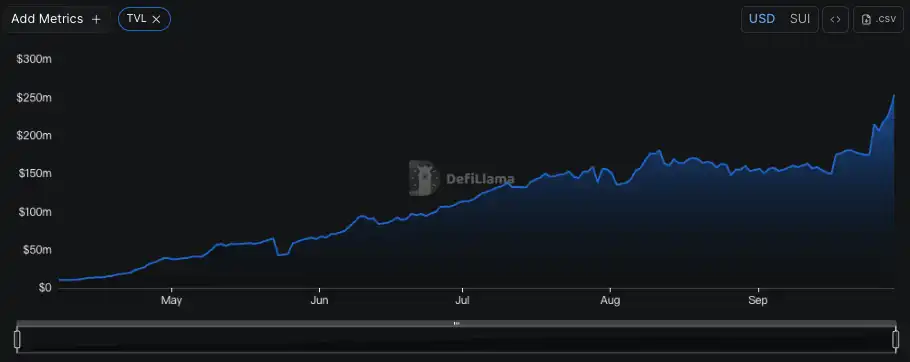
Since the launch of its testnet at the end of March this year, it has rapidly accumulated users and funds, with a current TVL of approximately $240 million and a cumulative trading volume exceeding $12 billion, boasting over 1.7 million users and 890,000 liquidity-providing addresses. By Q3 of this year, the trading fees for a single quarter have already exceeded $7 million.

From September 26 to October 19, Momentum, in collaboration with BuidlPad, launched the "HODL Yield Campaign," offering up to 155% annualized returns for liquidity pools including SUI, stablecoins, and Bitcoin. Participants can also earn double Bricks points rewards (pre-sale quotas and potential airdrop opportunities; the official statement is that current supporters will benefit first).
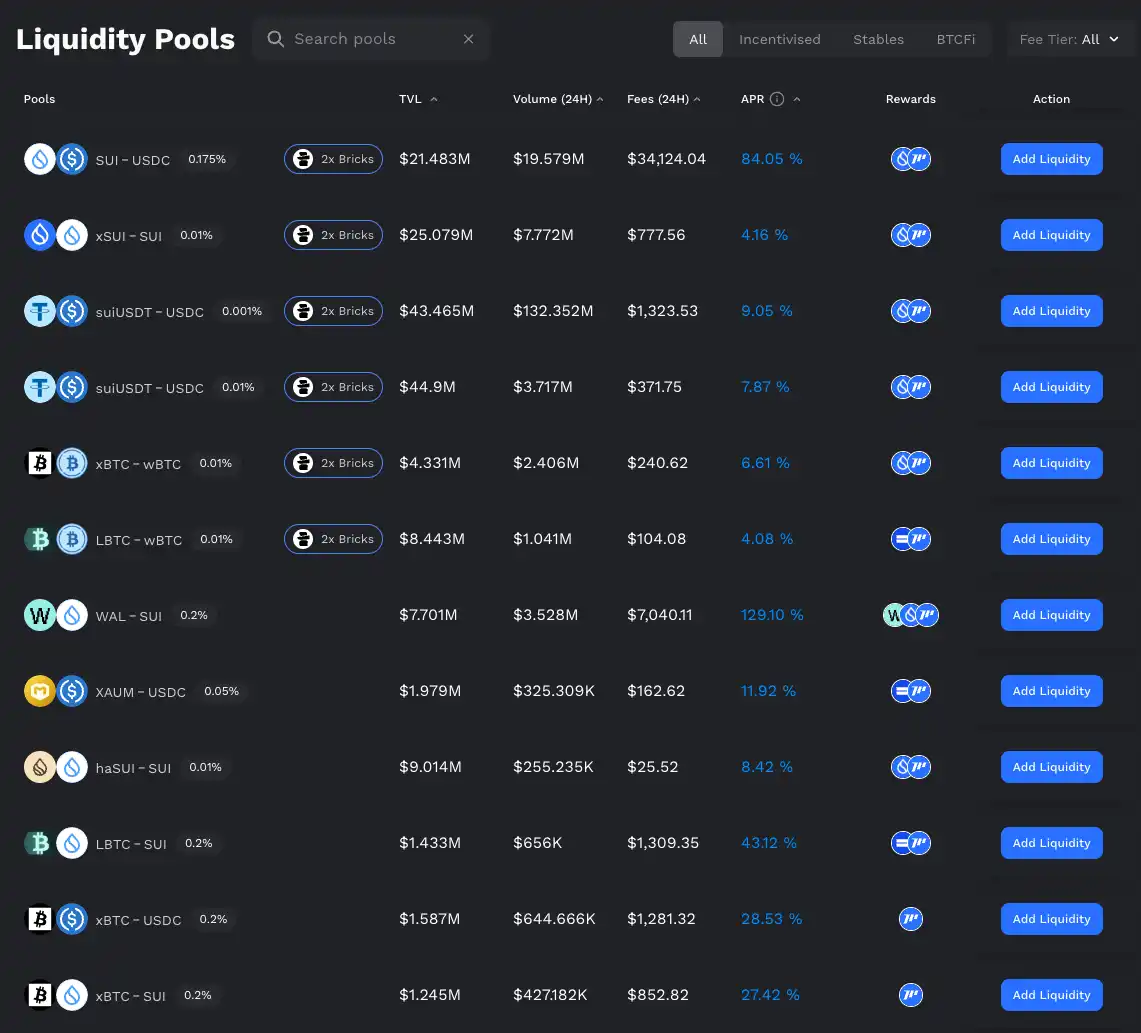
The process is straightforward; users just need to visit the BuidlPad Momentum HODL campaign page (official Medium has detailed procedures), connect their wallets, and provide liquidity to designated pools (such as SUI/USDC, xBTC/wBTC, etc.).
During the event, returns are calculated proportionally, and users can invest in the pool using SUI or USD stablecoins. The system will automatically settle and distribute MMT and Bricks rewards after the event ends.
Yield Basis
Yield Basis is a Bitcoin-native yield protocol launched by Curve founder Michael Egorov, which raised $5 million at a valuation of $50 million earlier this year.
Yield Basis utilizes an automatic re-leveraging mechanism to provide trading fee income for BTC liquidity providers while hedging against impermanent loss caused by AMM curvature risk. LPs can choose to receive BTC-denominated trading fees directly or forgo fees in exchange for YB token incentives, with locked veYB allowing participation in governance and sharing in protocol fees.
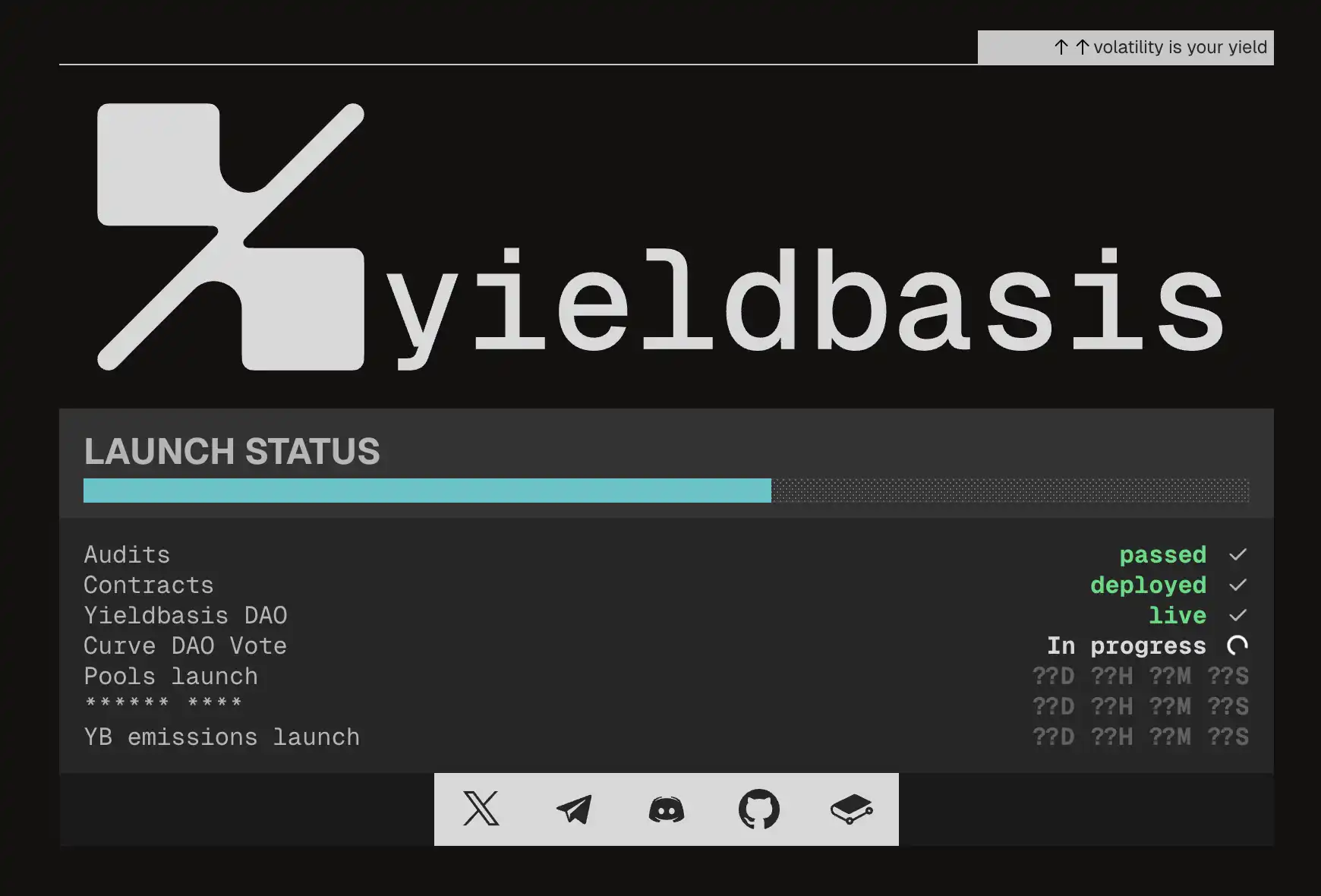
After a day's delay, Kraken announced that the first project selected for its LaunchPad in collaboration with Legion is Yield Basis. Due to Legion's "Legion Score" system, which allocates quotas based on on-chain behavior, social media activity, and developer contributions, it can filter out a large number of multi-account participants, ensuring that true builders and core users receive priority in subscription shares. Coupled with Kraken's listing channel effect, the market is paying close attention to this collaboration.
The current pre-sale model is divided into two phases, with 20% of tokens reserved for high-scoring Legion users (pre-deposits are currently open, and the project will determine quotas based on your Legion score), while the remaining 80% will be publicly sold on Kraken and Legion on a first-come, first-served basis, with $YB directly listed on Kraken after the sale ends.
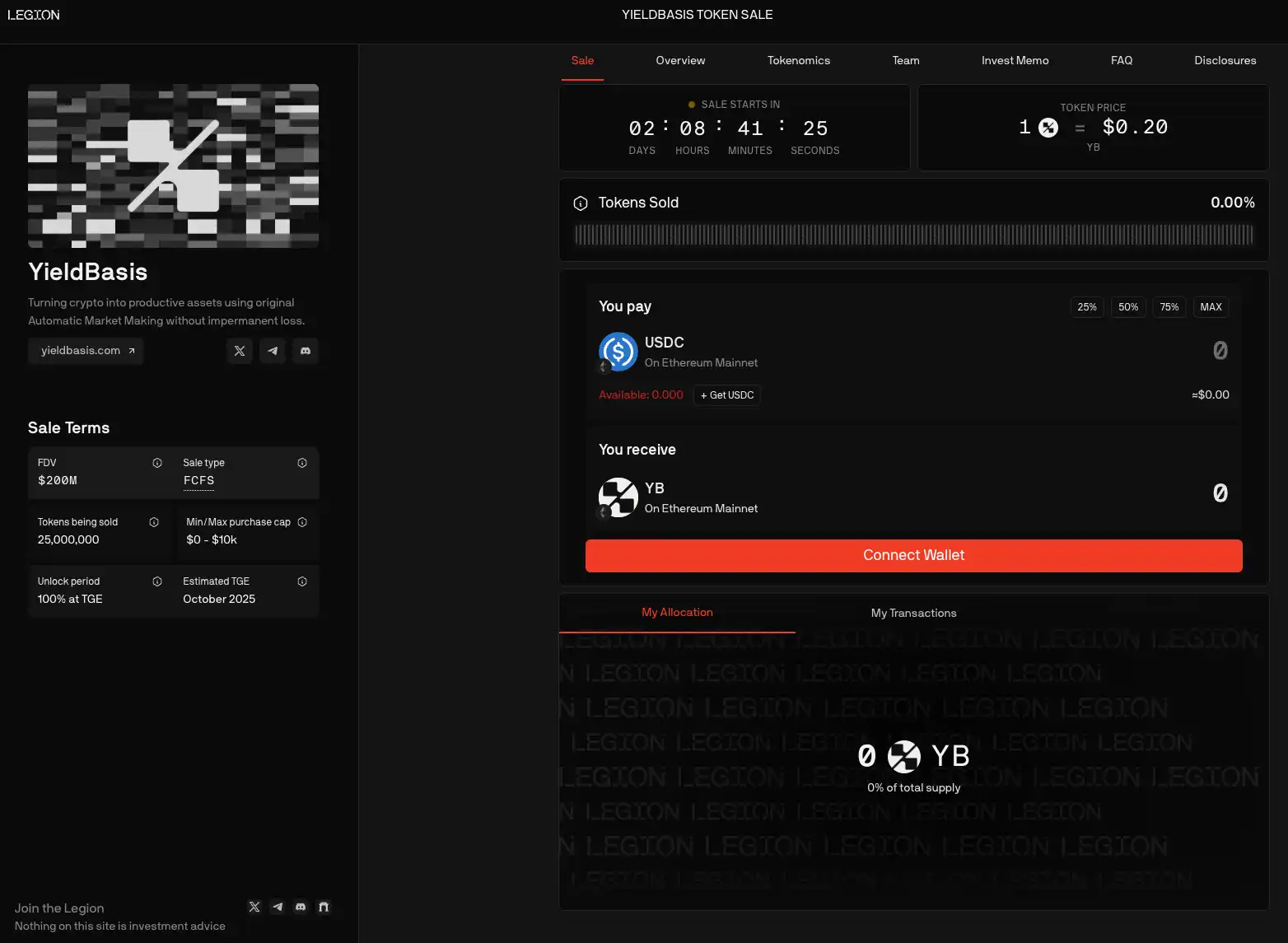
The total token supply is 1 billion, with 2.5% (approximately 25 million tokens) allocated for community sale at a fixed price of $0.20, with a maximum purchase limit of $10,000 per user. The token distribution includes 30% for liquidity mining incentives, 25% for the team, 12.5% for ecological reserves, 12.1% for investors, 7.5% allocated for Curve protocol licensing fees, 7.4% as developer reserves, and 3% for Curve governance incentive token distribution.
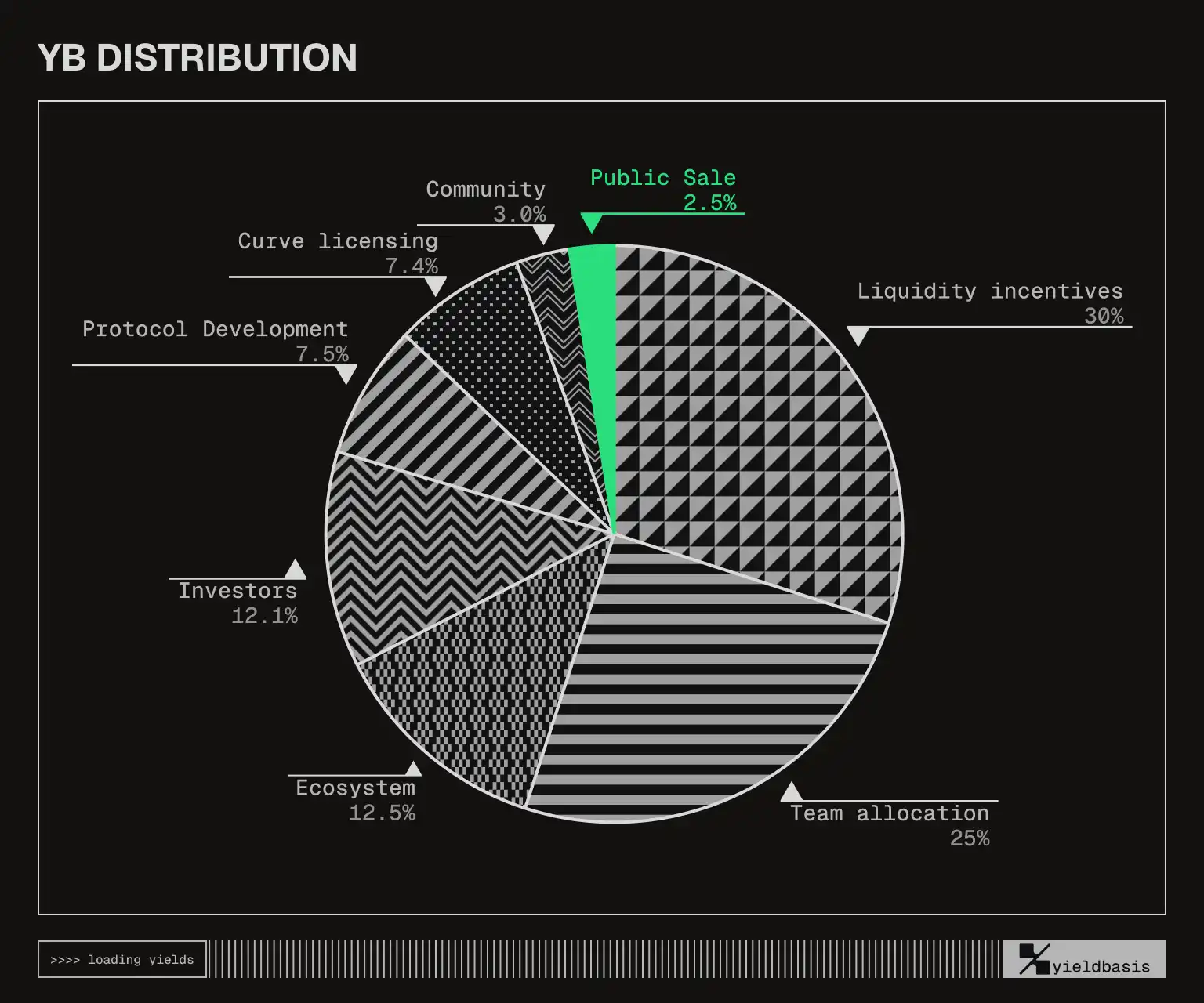
Notably, Curve DAO has voted to approve accelerated funding for YB using crvUSD to increase liquidity for the Bitcoin pool. Although the initial financing valuation was only $50 million, the support from the Curve community, Egorov's influence, and the sentiment premium from Kraken and Legion have allowed YB to be pre-sold at a valuation of $200 million, significantly higher than the previous internal financing valuation.
Canton Network
Canton Network is a public blockchain developed by Digital Asset aimed at institutional financial markets, emphasizing privacy protection and synchronized clearing among multiple institutions. Digital Asset has raised nearly $400 million over 8 rounds of financing since 2016, with traditional financial institutions such as Goldman Sachs, IBM, and JPMorgan leading multiple rounds. In the recent E round of financing on June 24, it attracted investments from more crypto-native VCs like Yzi Labs, Paxos, Polychain, and Circle.
We are currently at a point where TradeFi and blockchain are becoming increasingly intertwined, with top financial institutions such as Goldman Sachs, Citigroup, JPMorgan, HSBC, and BNP Paribas beginning to participate in testing and applications. There have already been some practical cases, such as issuing €100 million in digital native bonds for the European Investment Bank (EIB) in November 2024 and completing tokenization tests with Euroclear and the World Gold Council in October 2024, involving assets such as UK gilts, Eurobonds, and gold.
To further promote interoperability among ecological applications, Canton has launched a native token "Canton Coin" ($CC) as a payment and incentive tool for global synchronization service fees. Canton Coin can be issued by participants providing computing power or services to the network, rewarding application builders, users, and infrastructure providers.
Previously, the total supply of $CC could only be generated through node mining, with a maximum of 100 billion $CC in the first 10 years, followed by 2.5 billion each year. Currently, 28.48 billion $CC have been mined, and the distribution model, which initially provided 80% of the allocation to super validators, will gradually decrease over time and after network stabilization, leaving only 5% after 10 years, while the shares for application providers and other ordinary validators will increase accordingly. Because of this, $CC has very weak liquidity in the secondary market.
Canton Network is now collaborating with Temple in the ecosystem to launch a trading platform that allows users to buy, sell, and manage Canton Coin after completing KYC. However, it is still unclear how retail investors can specifically participate or if they can participate at all, and we need to wait for further announcements.
Currently, we can participate in the airdrop event of the Canton Wallet launched by the wallet project SEND on September 28. The official statement indicates that to test Canton Wallet, they will allocate $CC quotas to users participating in the test (after filling out a Google form for verification). The specific process involves buying a SENDTAG and holding 7,000 $SEND, and staking 20u into the vault. This may be the most convenient way for ordinary people to join, but Canton Wallet will only airdrop 30% of the $CC it earns to users, which may not present a significant profit opportunity.
免责声明:本文章仅代表作者个人观点,不代表本平台的立场和观点。本文章仅供信息分享,不构成对任何人的任何投资建议。用户与作者之间的任何争议,与本平台无关。如网页中刊载的文章或图片涉及侵权,请提供相关的权利证明和身份证明发送邮件到support@aicoin.com,本平台相关工作人员将会进行核查。



